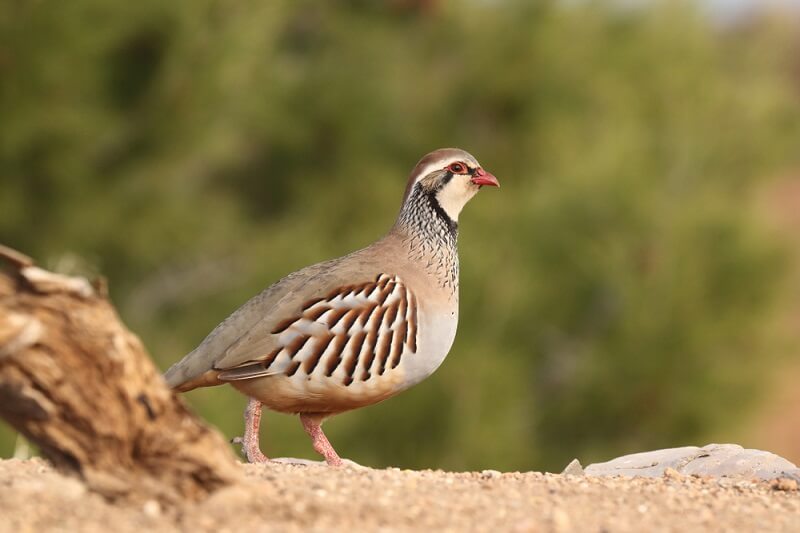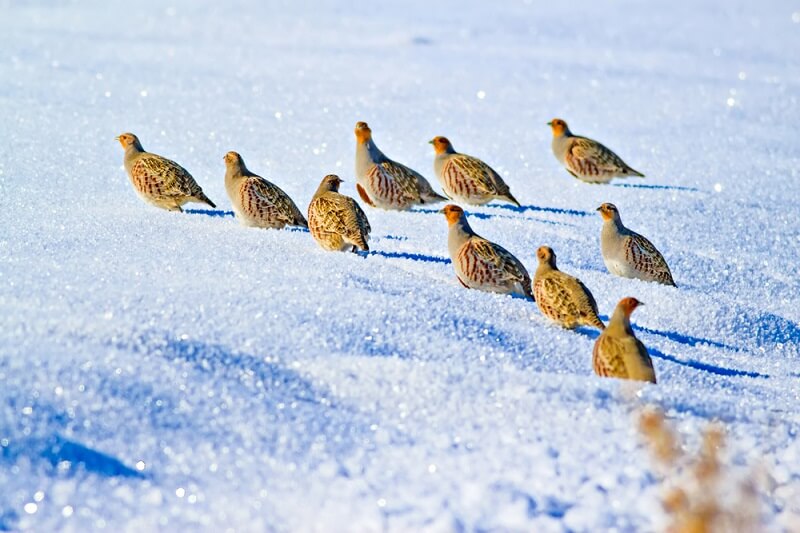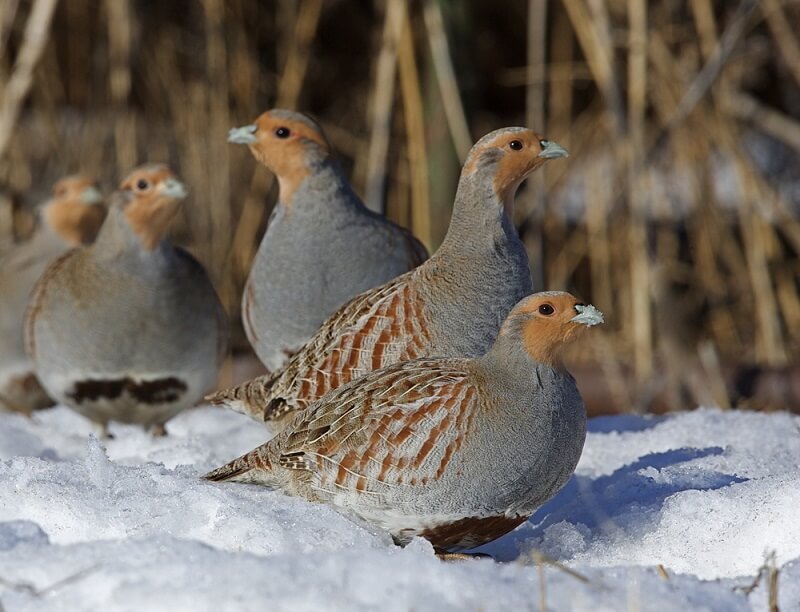
A partridge is a type of bird found naturally across much of Europe, Asia, and Africa. There are over 40 species of partridge, from 14 different genera, that occupy a diverse range of habitats and niches. In general, partridges are ground-dwelling birds, spending a large majority of their time sneaking through the underbrush to find insects, nuts, and berries. Partridges also make their nests on the ground, typically hidden amongst dense foliage. Like Quail and Pheasants, partridges are part of the Phasianidae family. In terms of weight and size, partridges fall right between quail and pheasants. Pheasants are typically much larger, while quail are slightly smaller. Without careful identification, a quail can easily be mistaken for a partridge. Considering that a partridge is a ground-dwelling bird, it begs the question: what was a partridge doing in that pear tree? The debate rages on – some authors suggest the gifted-bird is meant literally, while others suggest that the partridge is a hidden message about Catholocism from the Vatican. The classic Christmas song “The Twelve Days of Christmas” is not the only cultural reference of partridges. Partridges have made up a part of animal mysticism within several cultures – for several centuries at least. Early forms of art from long lost civilizations sometimes depict male partridges in ways that suggest that partridges served as a symbol of fertility. Given that partridges lay up to 20 eggs at a time, this theory has merit. Many animals with high-levels of reproduction were honored as fertility symbols in early human civilizations. If we take a look at how partridges fit into the bigger picture of biology, we can see that they offer many different insights into common biological concepts! While partridges are native to Europe, Asia, and Africa, there are also relatively small populations of introduced partridges in North America. The partridge, because it was such a prized game animal in Europe, was quickly brought to the “New World” as a sporting animal. Like tigers, lions, antelope, water buffalo, and many other species, several species of partridges are raised in the United States every year. “Canned hunts” are an increasingly popular sport in which farm-reared birds are placed throughout a field – slightly sedated. Hunters, who pay for the opportunity, walk through the baited field and shoot the partridges as they wake up and try to escape. While the ethics behind this type of hunting are questionable at best, the sport is growing in popularity throughout many parts of the world. Partridges are prepared and cooked in many different ways in different cultures across the world. Though most introduced game species do not become invasive and are highly managed populations, there are several instances of game species escaping captivity and establishing wild, invasive populations. Though it may seem curious that partridges live their lives entirely on the ground, this is actually more common in birds than one might think. Partridges, pheasants, quail, killdeer, cassowaries, emus, ostriches, roadrunner, burrowing owls, and many other species of birds nest on the ground (or even below it!). When you look at the evolutionary history of birds, this is not a surprising fact. Birds evolved from a specific branch of dinosaurs – many of which evolved feathers and many bird-like characteristics long before they could fly. In fact, paleontologists have uncovered many different dinosaur nests, all of which were found on the ground – much like the partridge! In ecology, scientists recognize two basic reproductive strategies in animals. An “r-selected” species is one that produces many offspring at a very low cost to the parent. By contrast, a “K-selected” species is one that produces very few offspring, but the parents invest lots of time and energy raising the young. On this scale, partridges are somewhere in the middle. Compared to other birds, partridges appear to be an r-selected species. With a maximum clutch size of 20 eggs, partridges could be capable of massive population growth if they didn’t have any predators. However, all birds display some level of parental care – usually in the form of sitting on eggs and incubating them for a month or more. This makes many birds less r-selected than fish or amphibians, which provide no parental care and may reproduce in batches up to 100,000 or more eggs at a time!
Kingdom
Animalia
Phylum
Chordata
Class
Aves
Order
Galliformes
Family
Phasianidae
Genus
14 Genera
Species
40+ Species
Niche
Insectivorous / Omnivorous Ground Dwellers
Length
Roughly 11-13 in (28-32 cm), varies by species
Weight
Varies by species
Lifespan
Varies by species
Social Structure
Small Flocks
Conservation Status
Some species Threatened, others Least Concern
Preferred Habitat
Found throughout Europe, Asia, and Africa, introduced to North America
Average clutch Size
10-22 eggs
Main Prey Species
Small insects, fruits, and nuts
Predators
Humans, most carnivorous mammals, large reptiles, larger birds
The Basics

A Partridge in a Pear Tree?

Interesting Insights from the Partridge!
Introduced Game Species
Ground-Dwelling Birds

r- versus K-selected Species
